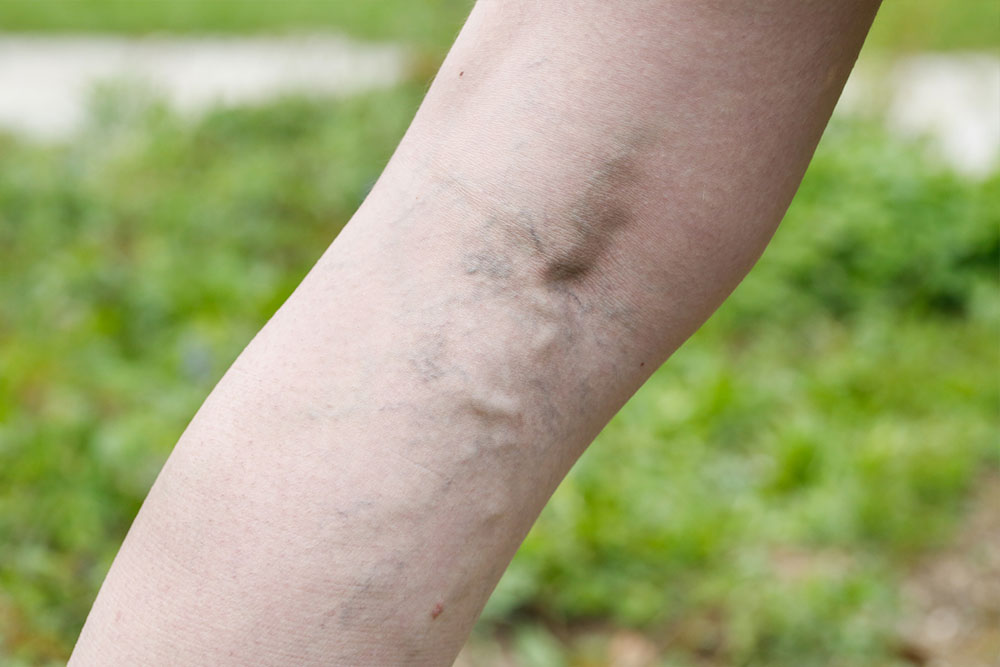Common Symptoms and Treatments for Varicose Veins
No one would like to spot some blue or dark purple colored veins on his or her legs or any other body parts. If you find such veins sneaking through your skin, you should talk to a dermatologist. This disorder is known as varicose veins and they form due to some faulty valves that pass blood in the wrong direction. The disorder can be found in adults and aged people.

Spider veins, swollen ankles, and aching legs are some of the symptoms one can experience when under the varicose vein disorder. Various treatments are available for varicose veins. You can opt out for home remedies, but if the condition is beyond your control, you should talk to a specialist, as the disorder can lead to varicose ulcers on your skin. Here, we will talk about the symptoms, diagnosis, and treatment for varicose veins.
Symptoms
In most of the cases, patients do not experience any pain at the beginning for their varicose veins disorder. Have a look at some of the most common symptoms of varicose veins.
- Twisted and lumpy and swollen veins
- Minor injuries lead to heavy bleeding
- Legs feel heavy after any physical activity
- Swollen ankles
- Skin discoloration in affected areas
- Venous eczema
- Leg cramps after prolong standing
- Restless legs syndrome
- Skin shrinking
Diagnosis of varicose veins
The process of diagnosis involves a physical examination by doctors, where they will check for swelling. If you have any aching or hard pain in your legs, you should mention it during the process. Doctors can also perform an ultrasound test to ensure proper functioning or valves in the veins. They will also search for the evidence of blood clot in your veins.
In a noninvasive test, experts will use a hand-held device against your skin or the affected area to examine the cause of this disorder. The device sends the images of veins to a display, where doctors try to find the actual reasons behind the ailment.
Treatments available for varicose veins disorder
The problem of varicose veins is all about enlarged, twisting and swollen veins, where patients can spot blue or dark purple-colored patches on their skin. A number of treatments are available for the varicose veins and most of them involve less invasive procedures. Let us look at some of the most convenient options for varicose veins treatment.
Self-Care and Compression Stockings
Obesity and overweight are somethings that can make the situation worse for the patient. Regular exercises like jogging can help you to reduce the symptoms of varicose veins. Avoid sitting or standing for long periods. Compression socks are among some of the effective home remedies for the patients of varicose veins. Such stockings squeeze the legs and help leg muscles and veins to transfer blood effectively. Here are some of the home remedy options that can help you to reduce the symptoms and pain of varicose veins disorder.
- Leg exercises
- Shedding excess weight
- Avoid tight clothes and high heels
- Avoid sitting in cross-legged posture
- Change your physical position frequently
Take medicines if required
A number of medicines are available in stores and you can prefer for the treatment for varicose veins that can give you relief from pain caused by varicose veins. However, before you decide to buy anything for this disorder, you should consult with a doctor. Doctors will examine the condition of your legs prescribe the required medicines. Doctors specialized in treating such disorders, are called phlebologists. You can also prefer dermatologists or dermatology surgeon to get relief from this problem. Here are some treatment options your doctors may recommend.
Sclerotherapy
In this process, experts inject a chemical into your affected varicose veins. A patient can experience the effect of this treatment a few weeks later. The color of the affected veins will disappear with time. However, you may have to take the injection more than once for a better outcome.
Endovenous Laser Treatment
In this treatment, doctors insert a catheter into the veins and send a small laser through the catheter and place it on top of the affected veins. The laser creates a mild energy burst that warms up the affected veins and repairs it.
Doctors use an ultrasound scan through which they move the laser around the affected veins. The process heats up the veins and seals all of it.
Radiofrequency Ablation
In this process, doctors use an ultrasound scan through which they make a small incision around the knee. They insert a narrow tube into the vein that emits radiofrequency. The energy of radiofrequency warms up the veins and makes their walls collapse. The process closes and seals the affected veins. The treatment is recommended for severe varicose veins condition.
These are some of the treatment options for your varicose veins. Thus, if you are looking for the best treatment for varicose veins, visit a specialist today.


